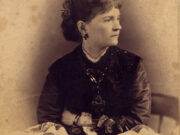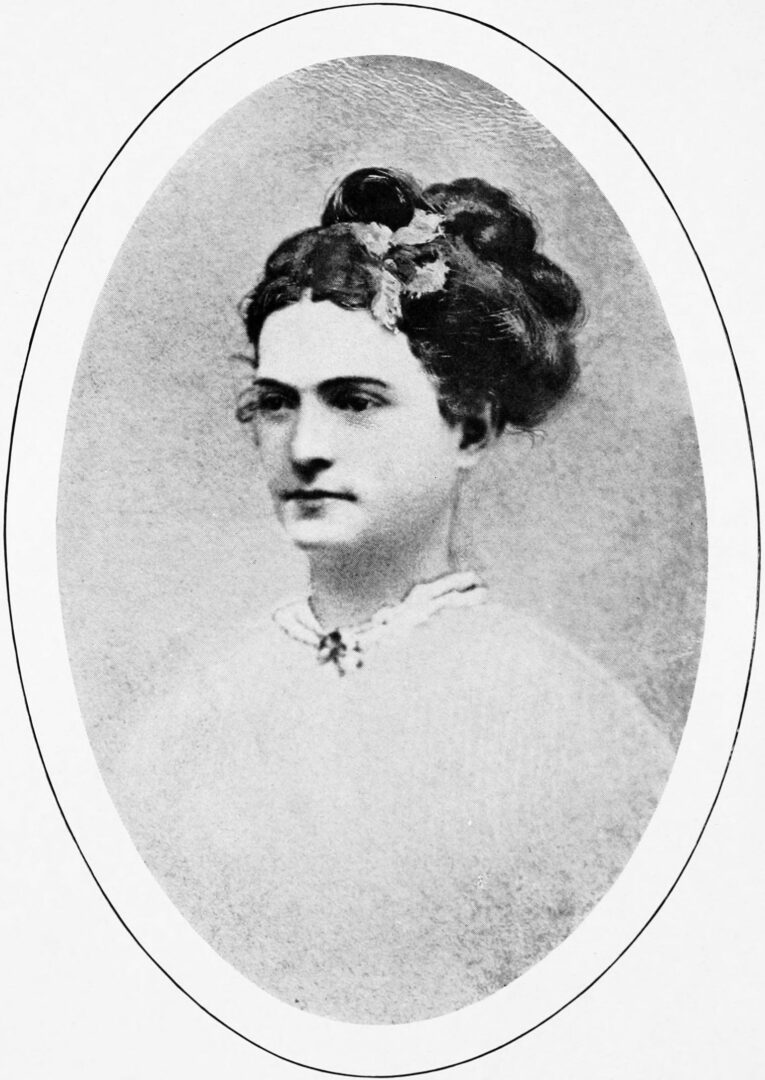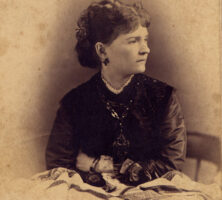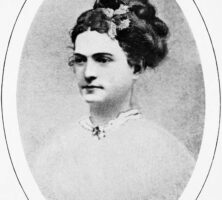Eliza Frances Andrews was a writer, newspaper reporter, editor, columnist, social critic, scientist, and educator.
By the time of her death in 1931 in Rome, Andrews had written three novels, more than a dozen scientific articles on botany, two internationally recognized botany textbooks, and dozens of articles, commentaries, and reports on topics ranging from politics to environmental issues. She was best known for her War-Time Journal of a Georgia Girl, 1864-1865, one of the most compelling first-person accounts of the Civil War (1861-65) home front, published in 1908.
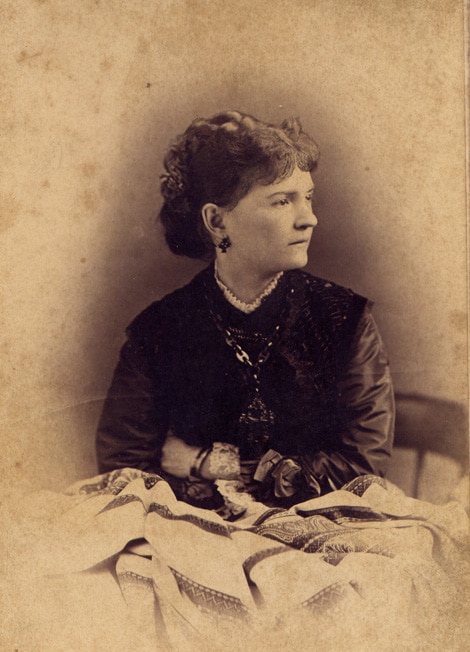
Early Life and Education
Eliza Frances “Fanny” Andrews was born on August 10, 1840, in Washington, Georgia, the second daughter of Annulet Ball and Garnett Andrews, a Georgia superior court judge. The Andrews family was prominent in antebellum Georgia society. Neighbors and friends included the Toombses, Semmeses, Tuppers, Barnetts, and Ficklens, all pillars of Georgia’s and the South’s aristocratic upper class. The Reverend Jesse Mercer, the Baptist minister, editor, and benefactor whose name is perpetuated in Mercer University, officiated at the 1828 marriage of Andrews’s mother and father.
Strong-willed, determined, and sophisticated, Andrews possessed a freedom and self-assuredness unusual for a woman of her time and social station. She was well educated and, like most women of her class, was trained to take her place on what historian Christie Anne Farnham calls the “pedestal of chivalry.” She was among the first students to attend LaGrange Female College (later LaGrange College). Well-versed in literature, music, and the visual arts, she was conversant in both French and Latin.
Civil War Era
Andrews’s father was an ardent Unionist and believed strongly that secession was a mistake. He was a supporter of slavery, and much of the Andrews family fortune came from enslaved laborers and cotton farming. He felt that leaving the Union and an ensuing war would put the family’s holdings at risk. Andrews and her four brothers disagreed strongly with their father, believing instead that secession was the only way to protect their way of life.
Three of Andrews’s brothers were officers in the Confederate army. One of her brothers, Garnett, attained the rank of colonel and was seriously wounded in the last days of the war. He practiced law after the war and late in the century became the mayor of Chattanooga, Tennessee. Andrews’s brother Frederic was an artillery officer, and her brother Henry, a physician, served in the Confederate medical corps. Her younger brother, Marshall, became a civil engineer and directed the Coosa River control project in the late nineteenth century.
When Union general William T. Sherman’s troops approached Wilkes County in late 1864, Andrews and her younger sister, Metta, fled to their older sister’s southwest Georgia plantation, located between Albany and Thomasville. Their journey is chronicled in Andrews’s War-Time Journal, whose value to scholars lies as much in the detailed descriptions of the devastation that Sherman’s forces inflicted as in the personal drama of the turmoil her own family experienced during the war’s last months.
The defeat of the Confederacy and the destruction of the southern economic system left Andrews’s father near penniless, and the war, as he had predicted on the night of Georgia’s secession from the Union, destroyed the family’s aristocratic way of life. Andrews’s mother and father died within eight years after the South’s defeat. She and her siblings were forced to sell the family home and plantations.
Postwar Career
Following the Civil War Andrews elected to support herself, something virtually unheard of for women of her class before the war. Unlike her peers, she refused to be forced into marriage or dependency on a man in order to achieve financial security and thus remained unmarried. She wrote in her diary in 1865, “Marriage is incompatible with the career I have marked out for myself.” Another diary, Journal of a Georgia Woman, 1870-1872 (2002), documents her transition from an antebellum belle to an independent, self-directed woman.
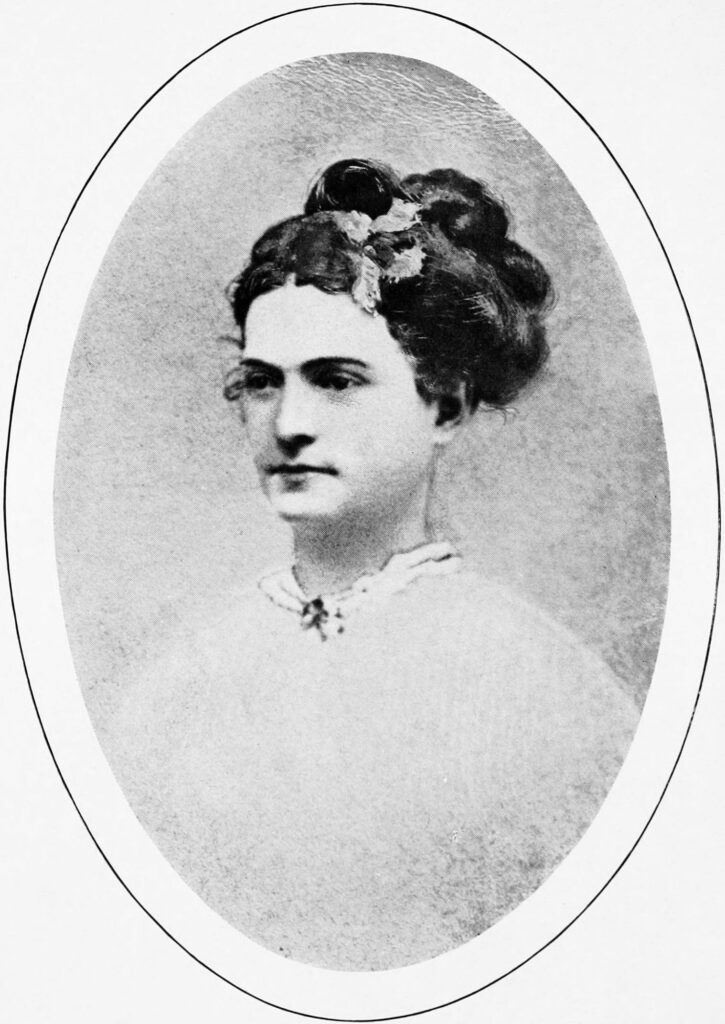
Andrews continued to live at home in Washington and began writing articles and essays for national publications, ranging from the New York World to Godey’s Lady’s Book. During this time she also began work on her first novel, A Family Secret, a fictionalized account of her wartime journal. It was published in 1876 to much critical acclaim and enjoyed a wide readership. Two other novels followed: A Mere Adventurer in 1879 and Prince Hal: or The Romance of a Rich Young Man in 1882.
In 1865 Andrews published an article in the New York World about the theft of gold and jewelry that was stolen along with Confederate gold from a wagon convoy in Georgia. In the 1870s she wrote about Eli Whitney and his invention of the cotton gin, giving credit to Catharine Greene for helping Whitney to refine his gin design. It would be a long time before historians acknowledged Greene’s role in Whitney’s accomplishment.
In 1873, soon after her parents’ deaths, Andrews spent a year in Yazoo City, Mississippi, where she lived with her brother Garnett and his family and taught at a girls’ high school. She returned the following year to Washington, where she spent seven years as the principal of the girls’ school there while also serving as a correspondent for the Augusta Chronicle. In 1885 she moved to Macon, where she taught literature and French for more than a decade at Wesleyan College, before returning once again to Washington and devoting herself full-time to lecturing and writing.
Andrews’s lifelong interest in botany became a greater source of her professional writing after the turn of the twentieth century. Long an advocate of making botany a basic part of school curricula, she published a high school textbook, Botany All the Year Around, in 1903, and a second text, A Practical Course in Botany, in 1911. By then she had moved to Montgomery, Alabama, where her brother Marshall lived. Although only a self-trained botanist, she collected more than 3,000 plant specimens during summer travels throughout the American West, Mexico, and Europe. In 1910 she donated her entire collection to the Alabama Department of Agriculture.
In 1911 Andrews moved to Rome, Georgia, where she spent the rest of her life. During this period much of her writing focused on scientific topics and on the educational importance of botany and biology to the high school curriculum. The royalties from her textbooks provided her with a comfortable income during her later years. In 1926 she was invited to become a member of the International Academy of Literature and Science, the only American woman so honored.
Andrews died in Rome on January 21, 1931, at the age of ninety. She is buried in the family plot in Washington.


